Perkins&Will’s John Sadlon and Arjav Shah discuss evolving client goals, hybrid models, the durability of early assumptions, and dispelling the rumored death of the office.
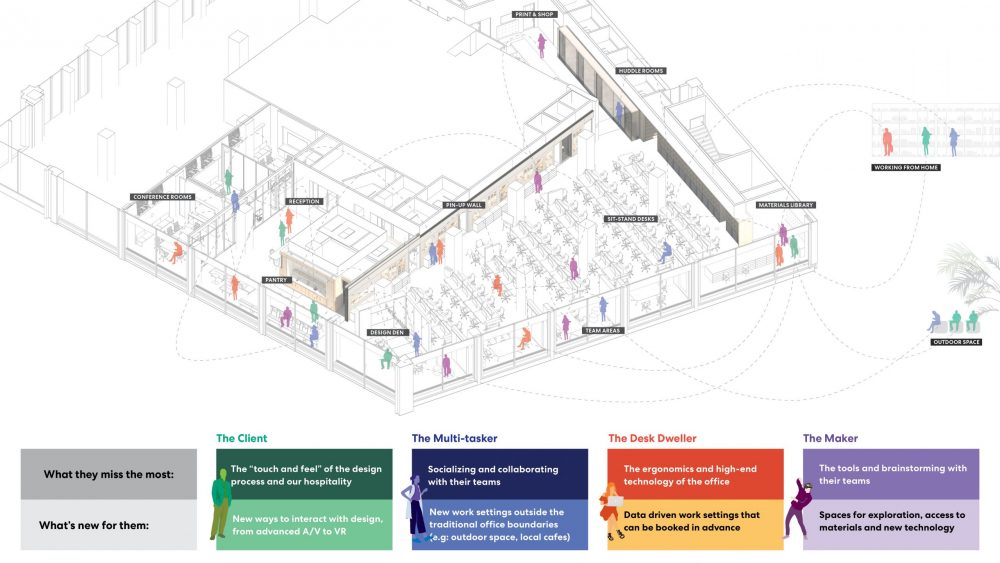
Over a year after the COVID-19 crisis hit New York City and beyond, a glimpse of what life will look like post-pandemic is coming into focus. Mass vaccination campaigns are underway – and accelerating – and they’re in a race against the impact of variants. Prior to the pandemic, the New York studio of architecture and design firm Perkins&Will was planning its own move to a new office space in the NoMAD neighborhood of Manhattan.
Today, with the studio finally moved into its new space, John Sadlon, principal of corporate interiors, and Arjav Shah, senior interior designer, get together to talk about evolving client goals, hybrid models, the durability of early assumptions and dispelling the rumored death of the office.
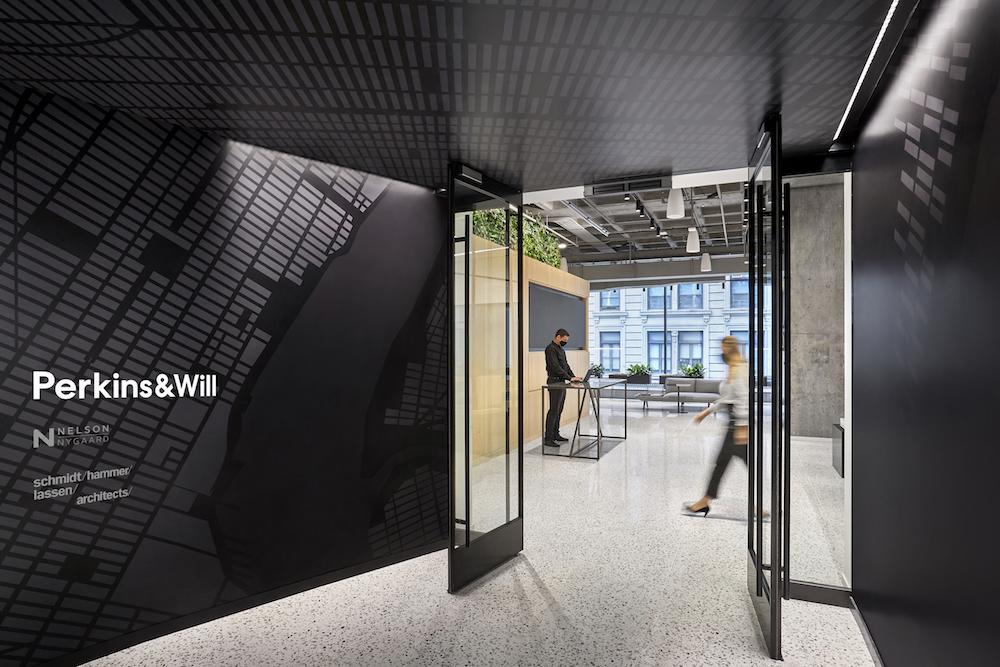
Arjav: Employees across the globe are craving the collaboration and interaction that comes with an office environment. When the pandemic hit, people were quick to say that the office was dead. That was a reactionary response… the office is not going away. Our research tells us that the human need to be together is as essential as ever for fortifying workplace community, social relationships, and a company’s mission and culture. We crave casual collisions. While people used to leave the office to achieve work life balance, people will now go to the office to achieve work life balance. We should design physical places for meeting, collaborating, and socializing.
John: A company’s physical office space is what makes their business uniquely theirs. The office has always been a physical embodiment of a company’s mission, culture and brand; the thumbprint. While employees have learned that they can be productive remotely, what we’re fundamentally missing is cohesion; bringing together a diverse array of ideas, people and experiences to inspire creativity.
Arjav: And as much as people are promoting culture and cohesion remotely, it’s not the same as the human interaction you get when you meet someone at the watercooler or the coffee machine. Diversity in thoughts and ideas are important, and you miss out on a lot of that at home.
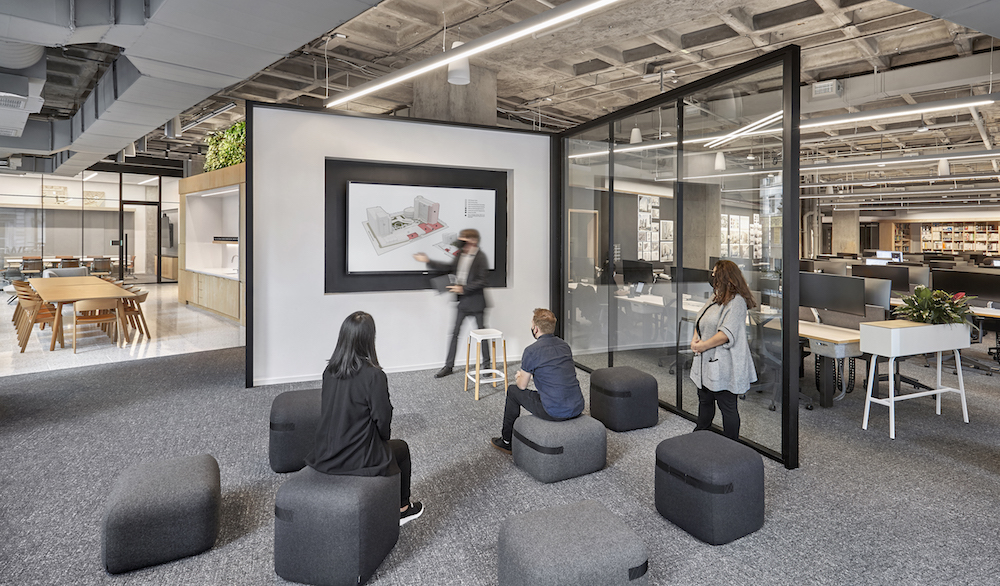
John: That said, there are many positives emerging from new working environments and workplace design, one being the end of “business-as-usual” thinking. There has been a significant shift in the onus and responsibility from employees proving they can work remotely, to business owners demonstrating that they can provide a workplace that is safe and healthy for employees to return to.
Arjav: Exactly right. There used to be this perception that if you were working from home, you weren’t really working. The pandemic has resulted in a positive mind shift where leaders have realized that people are doing work and meeting deadlines when they are working from home.
Businesses will become a lot more focused on the individual, instead of the company, meaning that employees will be given a lot of credibility, adaptability and flexibility to get their work done in a way that works for them while meeting deadlines and contributing to a team environment. It helps people respect each other’s boundaries and contexts, including new mothers or fathers, or someone that needs to take care of aging parents. Lifestyles vary drastically, and people are starting to respect that.
John: Within the Perkins&Will New York studio, one thing I was surprised by was a greater sense of empowerment among employees. People became less afraid to push the boundaries of how they performed services as they got more comfortable working outside of their comfort zone and with a calculated risk of failure. This resulted in a myriad of creative ideas that have been presented and executed with clients through technology or other tools, yielding more innovative results and higher engagement satisfaction. What surprised you the most?
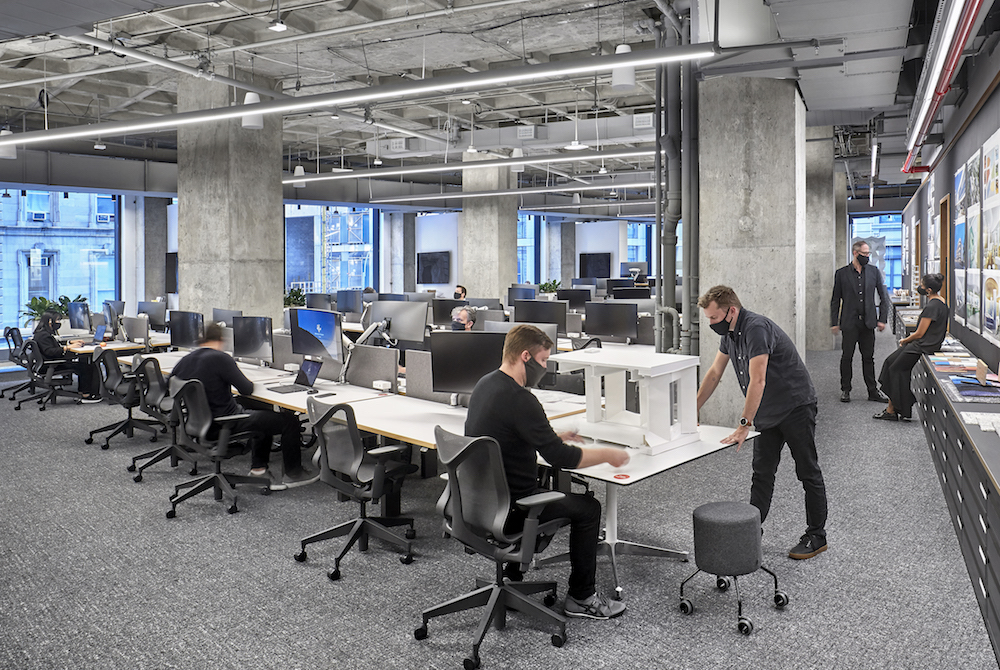
Arjav: In less than one week, Perkins&Will’s technology platform shifted from supporting a company of 26 global offices, to a company that had 2,600 remote-working employees, globally. The agility and nimbleness that everyone showed was amazing. That said, while technology is not an alternative to human interaction, new software and technology has been helpful for employees to remain flexible and adaptable. Virtual collaboration tools have allowed richer connections and team building among remote team members.
John: As interior architects and designers, our challenge is now to create solutions that will draw employees back to the office when they have become comfortable working remotely. What are some of the concepts that make you excited?
Arjav: One idea in development is the concept of a “magnet zone”. The magnet zone is a flexible space featuring different types of furniture for varying work styles: furniture on wheels, sofas, armchairs, mobile writable surfaces, and a well-integrated and distributed electrical and audio-visual infrastructure that would help make these zones highly flexible. It’s meant to encourage casual collisions as employees come together to ideate and collaborate. An example of this is the Guardian Life headquarters we’re currently working on, which takes a small section of a floor, approximately 2,000 square feet, and expands it with a variety of flexible furniture. It is strategically placed next to a pantry filled with snacks and coffee and has been created as a “magnet” to bring people together.
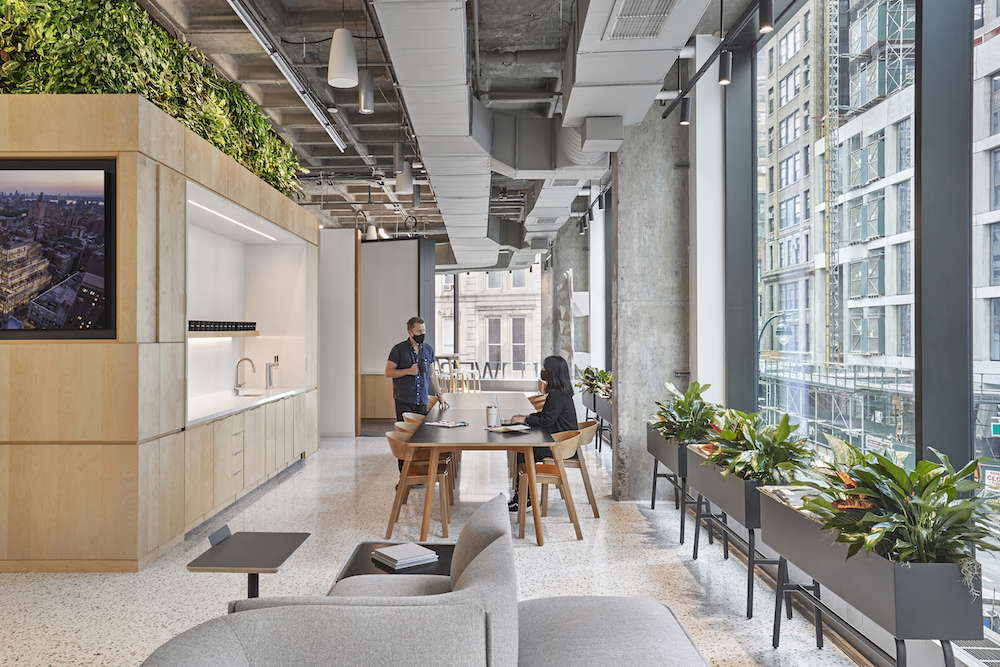
John: We need to provide spaces that offer employees that “breakthrough moment”. Magnet zones will do this by giving employees the opportunity to interact and feel inspired while giving them a sense of community and belonging. In order to shift thinking about return-to-work benefits, we need to shift the reality of how workplaces are designed and used.
It will also be important to treat the office as a respite from home life. This means health and wellbeing will continue to be at the forefront of the workplace experience, with 80% of our clients already asking for respites and wellness in the workplace in a number of different forms.
Arjav: Yes, and with that, I think the office will also integrate more amenity-infused spaces where things like a technology bar are included for added value and employee convenience. We’ll see employees pop into the office for a service, rather than to work all day.
John: We must be mindful of the broad spectrum of needs among people that make up an employee group. Some people have a set up at home that lends itself to focused and productive work, whereas others have distractions, connectivity issues or ergonomic limitations, and the home environment may not be conducive to particular work that needs to be done. It’s really about the professional role of the individual and whether there is a match between the environment they have at home and the role they are expected to fulfill.
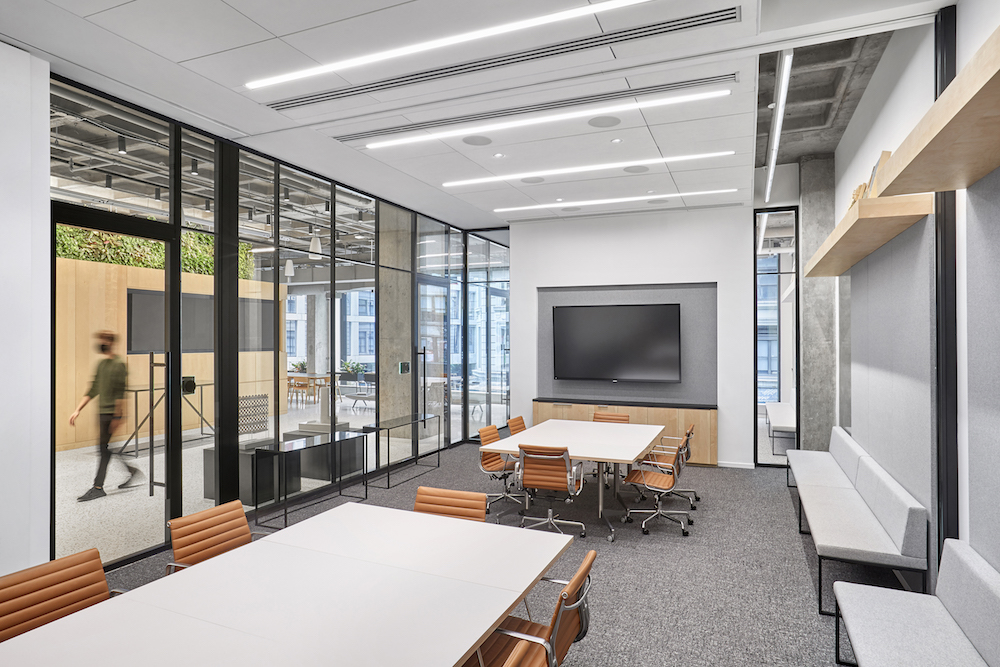
Arjav: When we started the design of Perkins&Will’s new NYC studio, we established four character types – maker, desk dweller, multi tasker, client – and we looked at how each uses office space. While the maker is very tactile, the multitasker is more agile, and the way these two types respond to the working from home model is drastically different. The era of “one size fits all” is long gone.
Arjav: Now, when people do return to the office and some are working from home, technology will be integral in blurring the lines between digital and physical. There is a need for architects and designers to take this opportunity to come up with a prototype or new model that helps to blur those lines. The new prototype should encourage the employee to have a fluid work environment, as this allows companies to support individual workstyles with choice and autonomy. The decision to work from home or off-site or have the ability to meet and connect with coworkers in a meeting room should no longer be stressful to make. Physical and digital work experiences will continue to co-exist, and teams across the globe will continue to innovate on both platforms.
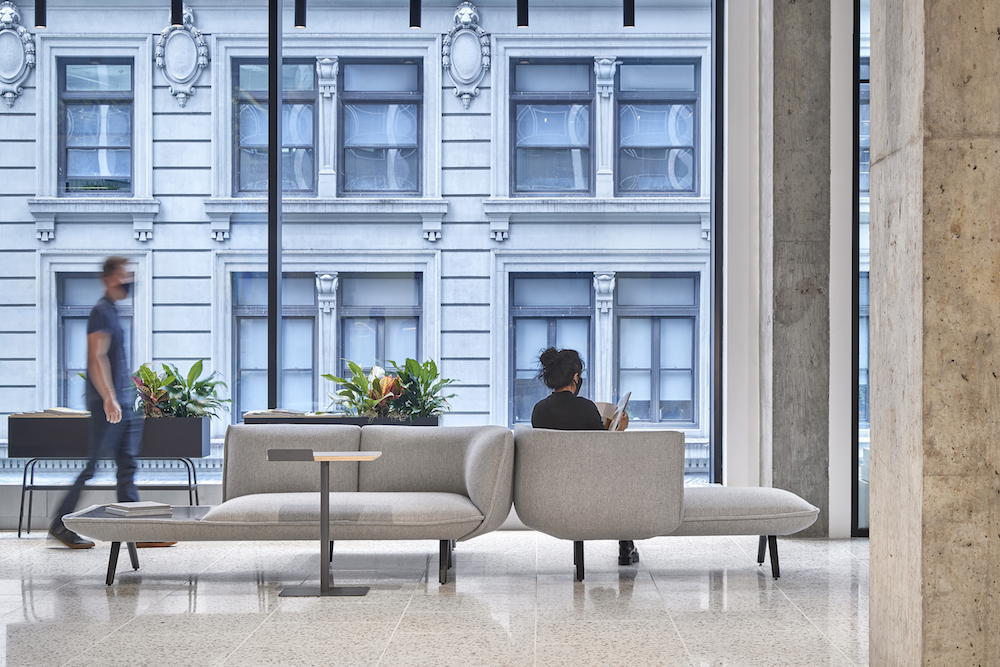
John: Tools like video conferencing and enhanced virtual reality are now a mainstay in most business settings. The physical environment needs to take these tools into account at an even higher degree, factoring in sight lines with cameras, adjustable lighting, enhanced acoustics and temperature control. It will be important for the hybrid model to offer a seamlessly integrated experience, and for architects and AV consultants to collaborate at an even higher degree to ensure cohesiveness.
Arjav: I think we’ll also see a lot more highly specialized spaces that consider user experience. Data will be integral as we start to track how office spaces are being used so that we can make them adaptable while building in mobility. So, if one concept doesn’t achieve the desired results, there is flexibility to swap it for something else.
John: Creating a memorable experience is essential to impactful workplaces of the future. Spaces that are thoughtfully designed in a richly contextual way will offer employees something unique that brings them and their colleagues together. The question we should ask ourselves going forward is, if the overall footprint requirement is shifting, how will we purposefully design creative and engaging workplaces that give compelling reasons for employees to come back?

